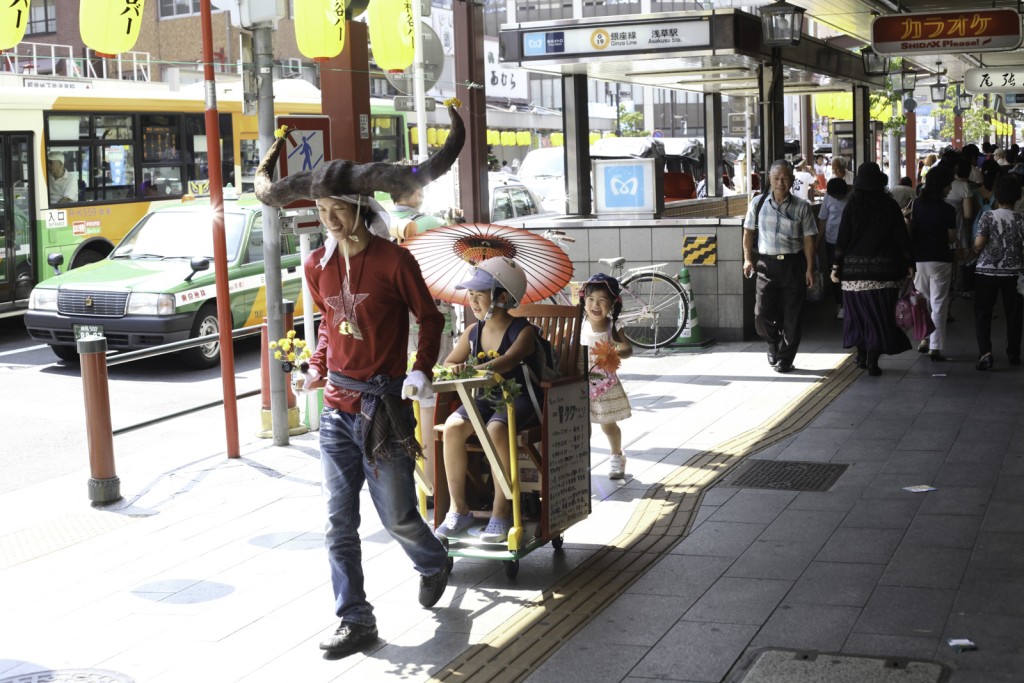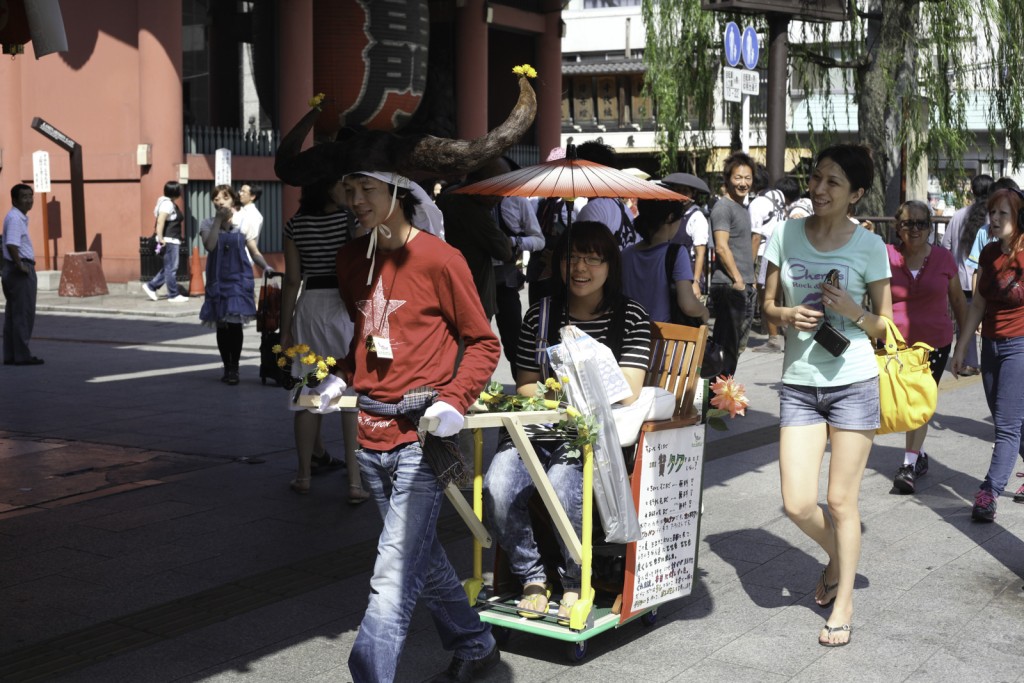Samnang Cow Taxi at Asakusa, 2010
- Single-channel HD video, color, sound, 4’11”
In an ongoing performance piece, Samnang Cow Taxi, Khvay Samnang pulls a simple cart around the city, using humor and endurance to reveal notable aspects of both the location and the artist’s relationship to it.
The first manifestation of Samnang Cow Taxi, in Asakusa, Japan in 2010, was one of the artist’s first public performances, and was conceived in part with reference to the robam trot, a Cambodian folk dance traditionally performed to bring good luck to a house before Khmer New Year. Enacted toward the conclusion of a residency at Tokyo Wonder Site, Samnang Cow Taxi at Asakusa was intended by Khvay to repay the generosity of the Japanese. Wandering through unfamiliar streets, the artist often stopped to ask strangers for assistance, and always found them friendly and helpful. In a gesture of thanks, to these strangers and to his residency hosts, the artist offered free rides to passersby in a simple rickshaw, while wearing outsized buffalo horns.
The horns recall the traditional reliance on cattle in Cambodian farming; they are sculpted from human hair collected at roadside barbers in Phnom Penh. Each of these longstanding Cambodian traditions—cow-drawn ploughs, human-powered rickshaws, and old-style street hairdressers—remain commonplace in the artist’s home country today. This is a stark contrast to the high-tech culture Khvay encountered in Japan. Samnang Cow Taxi at Asakusa highlights these cultural and economic specificities and differences, while providing a convivial context for the artist to engage with the citizens of Asakusa.
— Roger Nelson


